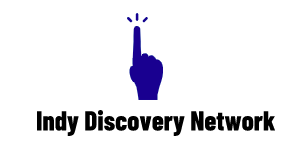Making a resume for a job or internship resume may seem complicated, but it is far from impossible. In the following guide, you will find the top tips and advice on how to create a resume (ทำ resume which is the term in thai).
What you need to know to write the perfect resume is in the details. The first and most crucial idea to keep in mind is that a resume is a document that advertises you to potential employers. This means that you need to pick out the most relevant and positive facts about your career history, skills and even reveal your personality a bit to present this information in the best possible way, showing your strengths and aptitudes for the job you are seeking.
You need to think about the concept of personal marketing to apply to your resume. This is the essence of what you need to master, since you are preparing your resume to attract and persuade a potential employer to call you for an interview, making you interested in meeting the person behind the role and knowing how to you can assume the position that is being offered, with a good use for the company and you.
Structure Of The Curriculum
Although the primary function of a curriculum is focused on content, the success of a curriculum also depends on a pleasant visual aesthetic. All your choices regarding layout are relevant – font style, tones, textures, paper size, etc.
The curriculum is the first thing that impacts the recipient because the image is already processed in the brain before the person has time to read the text or recognize a company name or school that draws attention to the content. So the format of the curriculum is essential because the reader subconsciously processes the image first.
· Personal Information
It is vital that, early in a curriculum, the contractor knows precisely who the document belongs to. Then you need to indicate your personal information such as name, address, nationality, contact information, etc.
· Goal
The goal is a brief statement that clarifies your motivation in applying for the type of job you want as well as your qualities that indicate that you fit well in that position. In most cases, a curriculum goal is summarized in up to two lines. Some curriculum developers often define the goal section as a ‘statement of focus.’
· Professional Experience
Within the professional experience section of a curriculum, applicants should detail any previous work that is relevant, paid or unpaid, that has been full-time or part-time, temporary or permanent, and even internships or volunteer work – always indicating dates, functions, companies, and locations for each.
· Academic Training
Just as in the professional experience section, you should always write your academic achievements and diplomas in reverse chronological order, starting with the most recent ones and receding, that is, appointing a master’s degree before the baccalaureate.
The academic training section plays an even more critical role when the candidate has little or no professional experience because he can count on his academic achievements.


